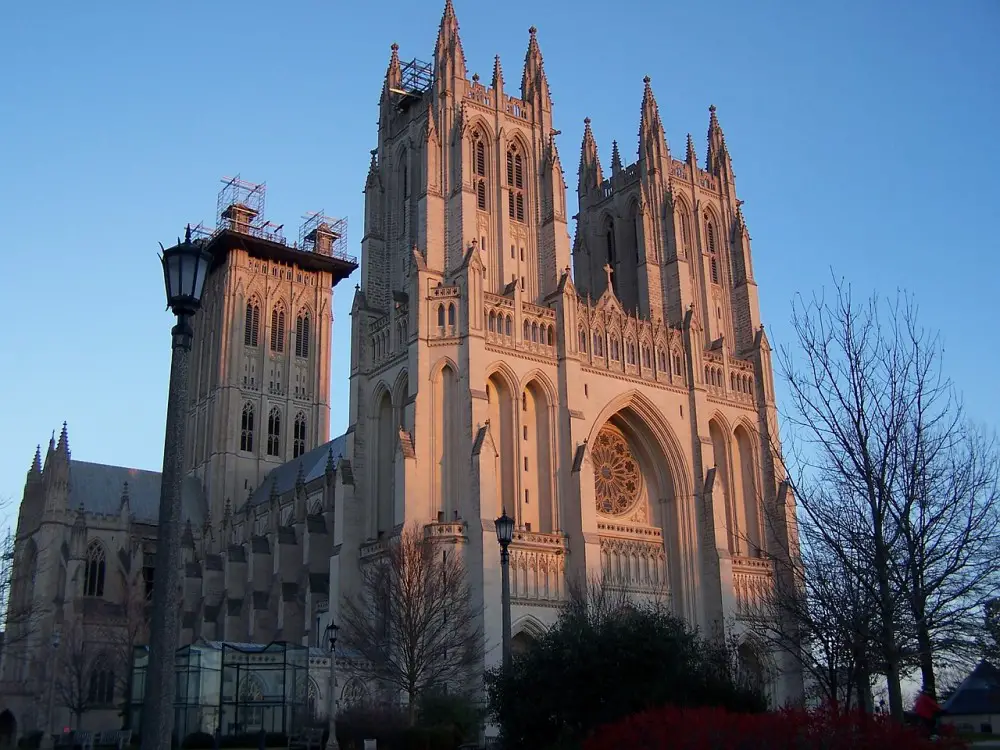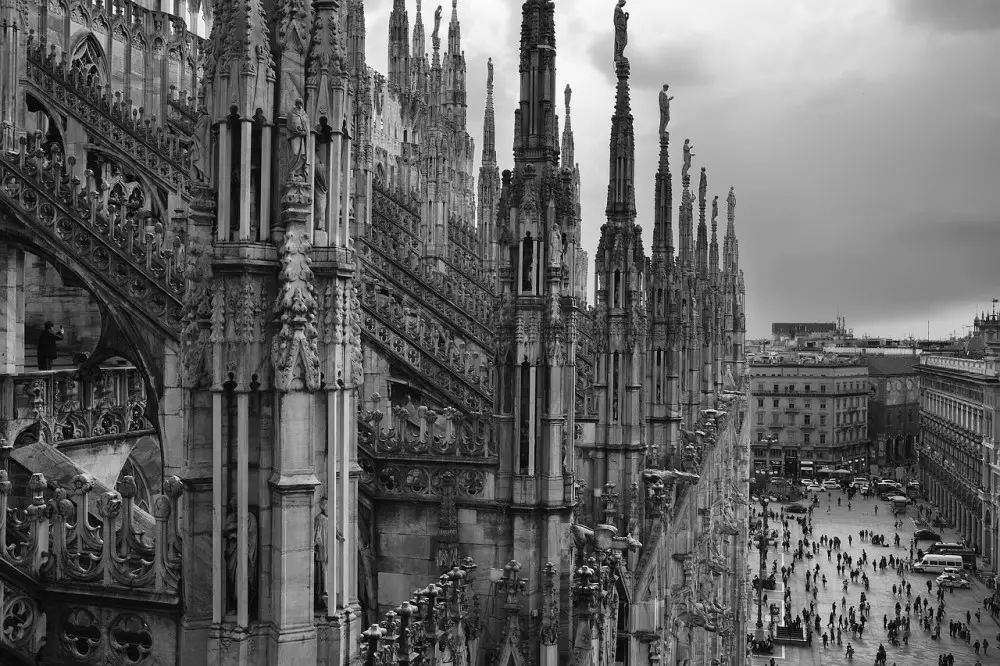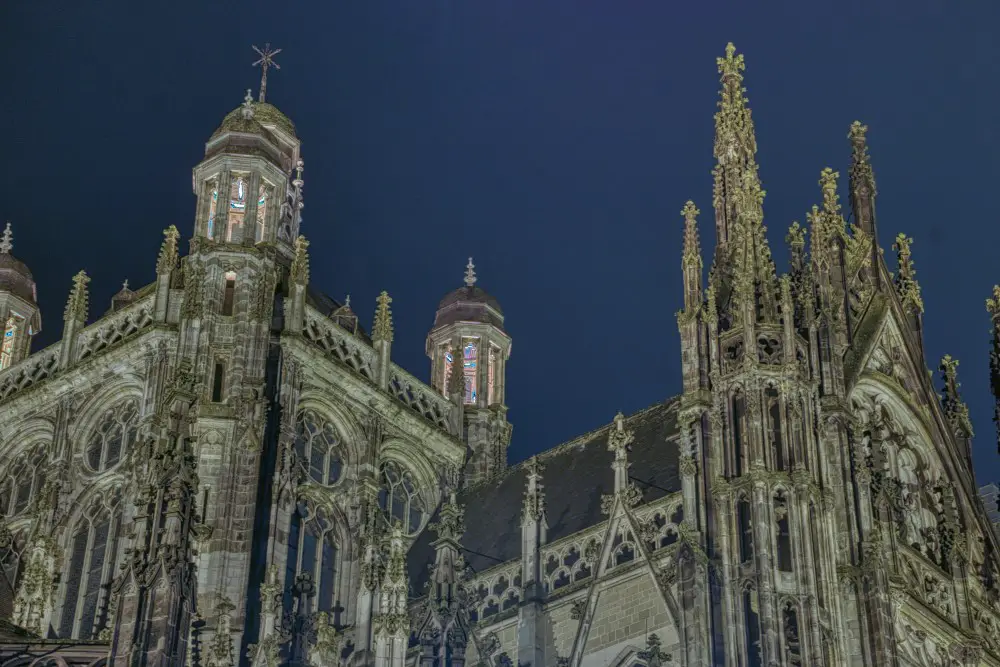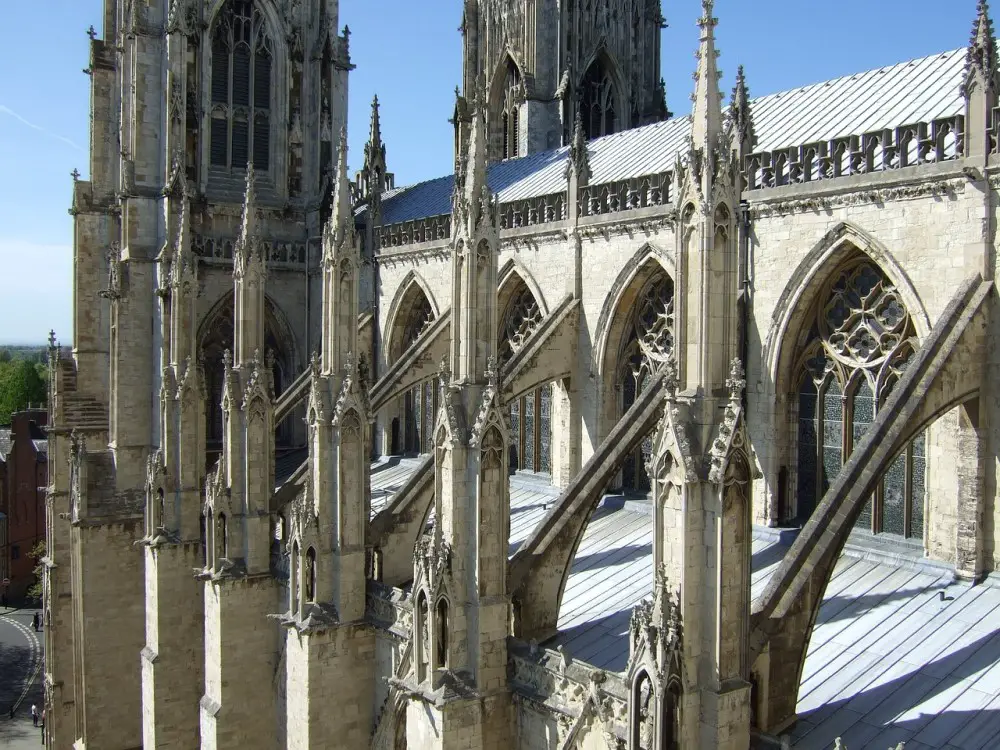A flying buttress is a type of architectural device used to support a connecting structure. They are a common feature in gothic architecture, and are often used to strengthen the outer walls, roofs and ceilings of larger buildings, such as churches and cathedrals.
Read our comprehensive guide to explore the full meaning of the term flying buttress, why they are used and more, including famous examples of flying buttresses around the world.
What is the meaning of a flying buttress in architecture?
In architecture, flying buttresses have been used since Roman and Greek times to protect the structural integrity of large buildings, such as churches, cathedrals and even modern skyscrapers.
The purpose of flying buttresses is to bear the load of the roofs, ceilings, windows and walls that comprise a building’s exterior. Like all buttresses, flying buttresses work by taking this weight and converting it into the thrust of a solid pillar. This balancing of forces allows for more complex and hefty constructions.
A flying buttress typically includes an inclined beam that connects the main walls of a structure with a pier placed close to where the slope meets the ground. The size of the building largely dictates the size of the buttress, as an increased building size means more lateral force to contend with.
Although they are often built with a simple composition, flying buttresses can have intricate designs in their own right. Many examples around the world include careful ornamentation, such as gargoyles and statues, that add a striking visual aspect to a building. These additions also have functional purposes, with drainage canals and large piers helping to reduce leakage and distribute even more weight.
The Gothic period of architecture in the 12th century is the first time that flying buttresses were used commonly to perform this task, and thereafter they were used in grand churches and cathedrals, predominantly in mainland Europe. This was especially useful in sustaining the weight of large stained glass windows.
To this day, the flying buttress is still used in buildings across the world to prop up structures and provide an impressive visual addition to already beautiful buildings.
Why is a flying buttress called a flying buttress?
The flying buttress is called a flying buttress due to its arch, which extends all the way from the upper section of the connected exterior wall to a pier which stands isolated from the building. The arch slopes downwards towards the ground, ‘flying’ through the air in the process.
The verb ‘to buttress’ is defined by the Cambridge dictionary as “to give support to or strengthen something”. This is why flying buttresses are named the way they are.
Where are flying buttresses usually found?
You would most commonly find a flying buttress sloping away from the exterior walls of an old church or cathedral. This is particularly the case in Europe, where the Gothic style of architecture has had the most influence on modern towns and cities.
However, examples of flying buttresses can be found on other types of structures, such as monuments and offices, worldwide.
Famous examples of flying buttresses
Around the world, there are many stunning examples of flying buttresses, some of which are so large that they extend the perimeter of a building by a considerable distance.
Here are some famous instances of flying buttresses on buildings that you may or not recognise:
- Notre Dame Cathedral, Paris, France

France’s most famous cathedral is world-renowned for its architectural intricacy. The flying buttresses that surround the main church were built in 1180, making it one of the earliest examples of buttresses being used in Gothic architecture.
- Lincoln Cathedral, Lincoln, England

Lincoln Cathedral was the tallest inhabitable structure in the world between 1311 and 1548, and this was in no small part due to the flying buttresses that helped support its huge frame. They stand firm, supporting the South roof, to this day.
- Washington National Cathedral, Washington DC, USA

Built in 1908, the National Cathedral in Washington DC boasts some of North America’s best examples of flying buttresses. The 2011 Virginia Earthquake caused some damage to the buttresses’ stonework but this was repaired shortly after.
- The Duomo, Milan, Italy

Although flying buttresses were not an original part of the construction of the Duomo in Milan, Italy, they are now recognised as a key element of the grand structure. They line the exterior walls of the roof, and are easily visible from street level.
- St. John’s Cathedral, ‘s-Hertogenbosch, The Netherlands

Some of the most intricately decorated flying buttresses in the world can be found on St. John’s Cathedral in the Netherlands. There are 96 figurines, including statues of various characters including drummers and painters, carved into the piers of the buttresses, making for a spectacular sight.
- Saint Rose of Viterbo Church, Santiago de Queretaro, Queretaro, Mexico

The flying buttresses at Saint Rose of Viterbo Church, Santiago de Queretaro, Queretaro, Mexico are unique, as they are some of the only examples of romanesque buttresses in Latin America. While not as grand in size as some others on this list, they provide a fascinating insight into architectural design around the world!
- Liverpool Metropolitan Cathedral, Liverpool, England

One of Europe’s most prominent examples of flying buttresses in modern architecture, Liverpool Metropolitan Cathedral features a set of buttresses that were included not by necessity but by choice. Erected in 1967, these supports almost give the cathedral the appearance of a rounded tent.
Difference between buttresses and flying buttresses
The difference between a regular buttress and flying buttress is simply that a regular buttress has contact with the exterior wall to which it is connected.
A flying buttress, on the other hand, travels across a span of external space to reach a pier. It is this extended arch that gives the flying buttress its name.
We hope you have enjoyed our comprehensive guide to flying buttresses. We hope you agree that they are certainly one of Gothic architecture’s most interesting trademarks!
For more news, guides and discussions from the world of urban construction and architecture, explore more of our articles here.
Or, for more definitions and full meanings of terms from the building profession and wider world of architecture, explore more of our wikis.
Last Updated on 3 August 2023 by Michael
